
Chula Vista: The Hidden Gem of Southern California
Discover Chula Vista, California – a blend of natural beauty, vibrant culture, and endless outdoor adventures nestled between San Diego and Tijuana.
Nestled between the bustling city of San Diego and the picturesque landscapes of Tijuana, Chula Vista is a delightful blend of natural beauty and cultural richness. Its name, which means 'beautiful view' in Spanish, perfectly captures the essence of this charming city. With a stunning coastline, scenic parks, and a vibrant arts scene, Chula Vista is a must-visit for anyone looking to experience the best of Southern California. Chula Vista is home to the Living Coast Discovery Center, a unique zoo and aquarium that offers an up-close look at the region's native wildlife. For those who love outdoor adventures, the city boasts numerous hiking and biking trails, including the scenic Bayshore Bikeway. The Chula Vista Marina provides opportunities for sailing, fishing, and other water activities, making it an ideal spot for nature enthusiasts and adventure seekers alike. The city also offers a rich cultural experience. The Chula Vista Heritage Museum provides a glimpse into the city's history, while the OnStage Playhouse and the Memorial Bowl host a variety of performances throughout the year. Food lovers will enjoy the diverse culinary scene, from authentic Mexican cuisine to fresh seafood and farm-to-table dining. Whether you're looking for relaxation or adventure, Chula Vista has something for everyone.
Local tips in Chula Vista
- Visit the Living Coast Discovery Center early in the morning to avoid crowds and enjoy the exhibits at a leisurely pace.
- The Bayshore Bikeway offers stunning views of the San Diego Bay; renting a bike is a great way to explore this scenic trail.
- Check the schedule for events at the Chula Vista Marina; there are often free concerts and festivals.
- Try local eateries for a taste of authentic Mexican food; Tacos El Gordo is a local favorite.
- Summer months can be busy; consider visiting in the spring or fall for a more relaxed experience.
Neighbourhoods in Chula Vista
Chula Vista: The Hidden Gem of Southern California
Nestled between the bustling city of San Diego and the picturesque landscapes of Tijuana, Chula Vista is a delightful blend of natural beauty and cultural richness. Its name, which means 'beautiful view' in Spanish, perfectly captures the essence of this charming city. With a stunning coastline, scenic parks, and a vibrant arts scene, Chula Vista is a must-visit for anyone looking to experience the best of Southern California. Chula Vista is home to the Living Coast Discovery Center, a unique zoo and aquarium that offers an up-close look at the region's native wildlife. For those who love outdoor adventures, the city boasts numerous hiking and biking trails, including the scenic Bayshore Bikeway. The Chula Vista Marina provides opportunities for sailing, fishing, and other water activities, making it an ideal spot for nature enthusiasts and adventure seekers alike. The city also offers a rich cultural experience. The Chula Vista Heritage Museum provides a glimpse into the city's history, while the OnStage Playhouse and the Memorial Bowl host a variety of performances throughout the year. Food lovers will enjoy the diverse culinary scene, from authentic Mexican cuisine to fresh seafood and farm-to-table dining. Whether you're looking for relaxation or adventure, Chula Vista has something for everyone.
When is the best time to go to Chula Vista?
Iconic landmarks you can’t miss
Chula Vista Center
Discover the vibrant shopping experience at Chula Vista Center, featuring diverse retail, dining, and entertainment options for an unforgettable visit.

Bayside Park
Discover the tranquil beauty of Bayside Park in Chula Vista, a perfect retreat for relaxation, picnics, and waterfront activities.

The Galley
Experience vibrant American cuisine and live music at The Galley, the perfect waterfront dining spot in Chula Vista, California.

Bowlero Chula Vista
Experience the ultimate bowling fun at Bowlero Chula Vista, where entertainment meets dining in a vibrant atmosphere perfect for everyone.

Birrieria Y Menuderia Guadalajara
Experience the authentic taste of Mexico at Birrieria Y Menuderia Guadalajara, where delicious birria and menudo await in Chula Vista.

Mountain Hawk Park
Discover the beauty of Mountain Hawk Park in Chula Vista, a perfect outdoor escape with breathtaking views, walking trails, and family-friendly picnic spots.

La Quinta Inn by Wyndham San Diego Chula Vista
Experience comfort and convenience at La Quinta Inn by Wyndham San Diego Chula Vista, your gateway to Southern California's top attractions.

Living Coast Discovery Center
Discover the vibrant ecosystems of Southern California at the Living Coast Discovery Center, an engaging aquarium and nature preserve in Chula Vista.

Sky Zone Trampoline Park
Dive into exhilarating fun at Sky Zone Trampoline Park in Chula Vista, where adventure meets fitness in a vibrant, family-friendly atmosphere.

Memorial Park
Discover the tranquility of Memorial Park in Chula Vista, a perfect blend of nature and recreational fun for all ages.

Chula Vista Marina
Experience the beauty of Chula Vista Marina, a perfect getaway for water sports, dining, and stunning coastal views in California.

De Cabeza /El Único
Discover the authentic flavors of Mexico at De Cabeza / El Único in Chula Vista, where every dish tells a story of culinary tradition and passion.

Chula Vista Marina View Park
Discover Chula Vista Marina View Park - A picturesque waterfront escape with stunning views, recreational fun, and serene picnic spots.

Himalayan House Restaurant
Experience the rich flavors of the Himalayas at Himalayan House Restaurant, where authentic dishes and a warm atmosphere await every visitor.

Grindhouse
Discover Grindhouse in Chula Vista: A cozy coffee shop offering unique flavors, delicious pastries, and a warm atmosphere for every coffee enthusiast.

Unmissable attractions to see
San Diego Zoo
Discover the extraordinary wildlife and conservation efforts at the world-famous San Diego Zoo in Balboa Park, California.

USS Midway Museum
Discover the rich naval history and aviation legacy at the USS Midway Museum, an iconic maritime museum in San Diego.

SeaWorld San Diego
Explore the wonders of marine life and thrilling rides at SeaWorld San Diego, a top theme park for families and adventure seekers.

Old Town San Diego State Historic Park
Explore the rich history and vibrant culture of California at Old Town San Diego State Historic Park, a living museum of the state's heritage.

Seaport Village
Experience the best of San Diego at Seaport Village, a must-visit destination for shopping, dining, and stunning waterfront views.

Mission Bay Park
Explore Mission Bay Park, San Diego's largest aquatic park, where stunning views and recreational activities await every visitor.

Tijuana Cultural Center
Discover the vibrant culture and art of Tijuana at the Tijuana Cultural Center, featuring immersive exhibitions and an IMAX theater experience.

Petco Park
Discover the excitement of Petco Park, where thrilling baseball games and unforgettable events come to life in the heart of San Diego.

Belmont Park
Discover endless fun at Belmont Park, a historic amusement park in San Diego with thrilling rides, delicious food, and beautiful beach views.

Torrey Pines State Natural Reserve
Explore the breathtaking landscapes of Torrey Pines State Natural Reserve in La Jolla, CA, where coastal beauty meets unique wildlife and scenic trails.

Cabrillo National Monument
Explore Cabrillo National Monument, a historic park in San Diego celebrating California's colorful history and offering stunning coastal views.

Lifeguard La Jolla Cove
Explore La Jolla Cove, a stunning public beach with picturesque views, vibrant marine life, and perfect spots for relaxation and adventure in California.

Waterfront Park
Explore the lush landscapes and stunning waterfront views at Waterfront Park, a family-friendly gem in the heart of San Diego, California.
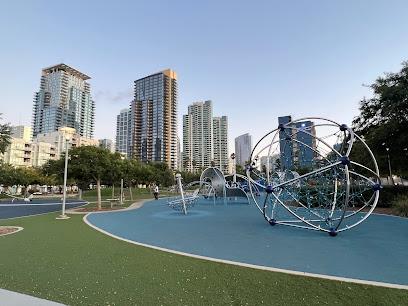
Coronado Ferry Center
Experience breathtaking views and vibrant shopping at Coronado Ferry Center, the gateway to coastal adventures in Southern California.

Japanese Friendship Garden and Museum
Explore the serene beauty of the Japanese Friendship Garden in San Diego, a cultural gem showcasing traditional Japanese horticulture and design.

Essential places to dine
Tacos El Gordo
Discover the flavors of Mexico at Tacos El Gordo - where authentic tacos meet vibrant culture in Chula Vista.

Olive Garden Italian Restaurant
Experience authentic Italian cuisine at Olive Garden in Chula Vista – perfect for families with gluten-free options and delightful wines.

La Bella Pizza
Experience authentic Italian cuisine at La Bella Pizza in Chula Vista - where great food meets exciting sports in a vibrant atmosphere.

Aunt Emma's Pancakes
Discover the irresistible charm of Aunt Emma's Pancakes – where every bite is a delightful morning treat in Chula Vista.

Black Angus Steakhouse
Experience mouthwatering prime steaks at Black Angus Steakhouse in Chula Vista - where flavor meets hospitality.

Filippi's Pizza Grotto Chula Vista
Savor authentic Italian flavors at Filippi's Pizza Grotto in Chula Vista—where pizza dreams come true!

BJ's Restaurant & Brewhouse
Experience delectable cuisine and handcrafted brews at BJ's Restaurant & Brewhouse in Chula Vista - your ultimate dining destination.

The Galley
Discover delicious American cuisine and live music at The Galley in Chula Vista's picturesque marina setting.

Karina's Mexican Seafood
Experience the vibrant blend of traditional Mexican cuisine and fresh seafood at Karina's Mexican Seafood in Chula Vista.

Aqui Es Texcoco
Experience the rich flavors of authentic Mexican cuisine at Aqui Es Texcoco in Chula Vista – a must-visit destination for food lovers.
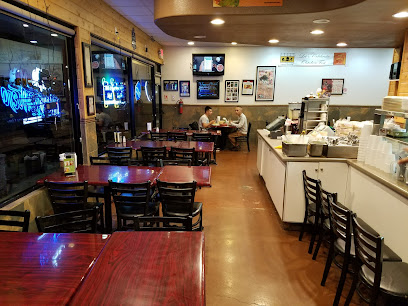
Red Lobster
Discover fresh seafood delights at Red Lobster in Chula Vista - where American flavors meet coastal charm.
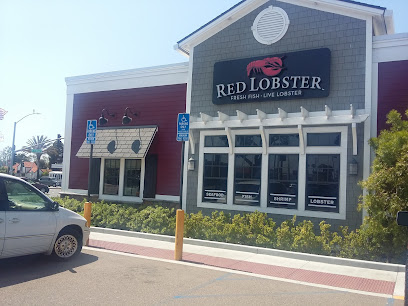
Talavera Azul/ Chilaquiles
Experience the authentic flavors of Mexico at Talavera Azul – your go-to destination for delicious breakfast in Chula Vista.

La Quinta Grill Restaurante
Experience authentic Mexican flavors in Chula Vista at La Quinta Grill Restaurante - where every meal feels like a fiesta.

El Patio
Discover El Patio in Chula Vista - where authentic Mexican flavors meet family-friendly dining in a vibrant atmosphere.

Italianissimo Trattoria
Discover authentic Italian flavors at Italianissimo Trattoria in Chula Vista—where every meal feels like a journey through Italy's culinary delights.
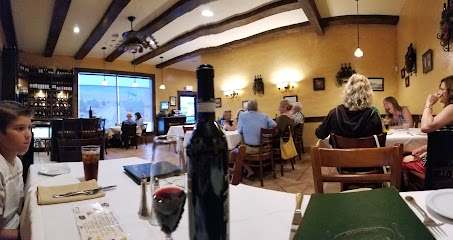
Markets, malls and hidden boutiques
Chula Vista Center
Discover the vibrant Chula Vista Center, a shopping haven offering diverse stores, delicious dining, and exciting events in sunny California.

Otay Ranch Town Center
Experience shopping, dining, and entertainment at Otay Ranch Town Center, the ultimate destination in Chula Vista, California.

Terra Nova Plaza
Explore the vibrant shopping experiences and diverse dining options at Terra Nova Plaza in Chula Vista, California.

Hobby Lobby
Explore your artistic side at Hobby Lobby, your one-stop destination for crafting supplies, fabrics, and home décor in Chula Vista.

Genesis Square Shopping Center
Discover the vibrant Genesis Square Shopping Center in Chula Vista, CA, for a delightful shopping and dining experience amidst a welcoming atmosphere.

Eastlake Village Marketplace
Discover the charm of shopping, dining, and entertainment at Eastlake Village Marketplace in Chula Vista, California.

Barnes & Noble
Explore the world of literature at Barnes & Noble in Chula Vista, where books meet coffee in a warm and inviting atmosphere.

Kohl's
Explore a diverse range of affordable fashion and home goods at Kohl's in Chula Vista, your ultimate shopping destination.

Chula Vista Crossings
Explore Chula Vista Crossings, a vibrant shopping mall in California offering diverse shopping, dining, and entertainment for every traveler.

Marshalls
Explore the stylish and budget-friendly shopping experience at Marshalls in Chula Vista, where unique finds await every visitor.

Village Walk at Eastlake
Experience the best of shopping, dining, and community events at Village Walk at Eastlake in Chula Vista, California.

Bonita Point Plaza
Discover the vibrant Bonita Point Plaza in Chula Vista, California, a shopping haven with diverse stores and delightful dining options.

Gateway Marketplace
Discover a shopping paradise at Gateway Marketplace, where diverse shops and delightful dining await in Chula Vista, California.
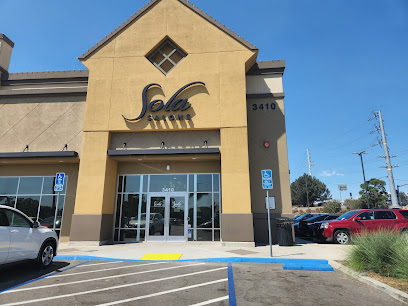
T.J. Maxx
Explore T.J. Maxx in Chula Vista for unbeatable deals on fashion, jewelry, and accessories for the whole family.

Christina's Fashion
Explore Christina's Fashion in Chula Vista for stunning dresses and bridal styles, combining elegance and personal service for your special occasions.

Essential bars & hidden hideouts
BJ's Restaurant & Brewhouse
Explore BJ's Restaurant & Brewhouse in Chula Vista for a delightful mix of gourmet food, craft beers, and a lively sports bar ambiance.

The Manhattan
Discover the lively atmosphere of The Manhattan Bar in Chula Vista, where cocktails meet comfort food in a welcoming lounge setting.

Vogue Tavern
Discover the lively ambiance and craft beer selection at Vogue Tavern in Chula Vista, a premier brewpub experience.

The Canyon Sports Pub & Grill - Canyon Club
Discover The Canyon Sports Pub & Grill, a lively sports bar in Chula Vista offering delicious bites, refreshing drinks, and an electrifying game-day atmosphere.

3N1 Sports Bar & Grill
Experience the ultimate fusion of sports, grill, and lounge at 3N1 Sports Bar & Grill in Chula Vista, where flavors and fun collide.
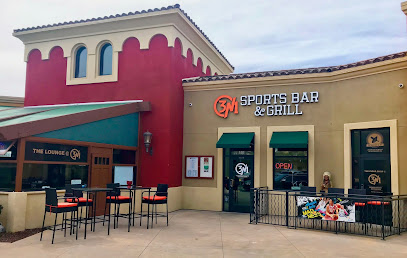
Bar Sin Nombre
Discover the vibrant nightlife at Bar Sin Nombre in Chula Vista, where creative cocktails and a welcoming atmosphere await you.

Mi Barra Bar
Discover the lively Mi Barra Bar in Chula Vista, where great music, delicious drinks, and a vibrant atmosphere await you.

Silver Dollar
Discover the vibrant cocktail culture at Silver Dollar in Chula Vista, where creativity meets quality in every drink.
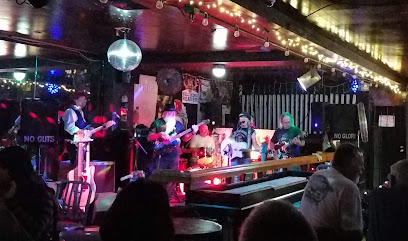
The Gentle Penguin
Experience relaxation and comfort at The Gentle Penguin, Chula Vista's inviting lounge offering delightful drinks and cozy ambiance for all.

Dock's Cocktail Lounge
Discover the vibrant atmosphere and creative cocktails at Dock's Cocktail Lounge in Chula Vista, where every sip is a celebration.

The Search Bar
Discover the vibrant culinary scene at The Search Bar in Chula Vista, where every bite is a celebration of flavor.

Star Gazer Club
Explore the Star Gazer Club in Chula Vista for a unique blend of cocktails and cosmic-themed entertainment in a vibrant atmosphere.

The Elwood
Discover The Elwood, an enchanting bar in Chula Vista, offering a vibrant atmosphere and a diverse drink menu for a memorable night out.

MJ's Bar & Grill
Experience the best of casual dining at MJ's Bar & Grill, where flavorful grilled dishes and refreshing drinks await in Chula Vista.

Formosa Club
Discover the vibrant nightlife at Formosa Club, a top cocktail bar in Chula Vista, California, perfect for unwinding with friends and enjoying expertly crafted drinks.
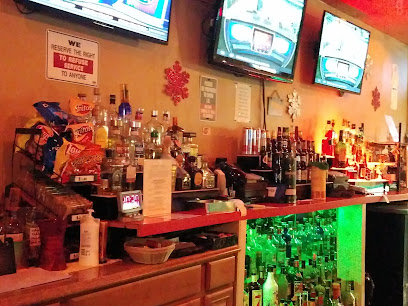
Local Phrases
-
- HelloHola
[oh-lah] - GoodbyeAdiós
[ah-dee-ohs] - YesSí
[see] - NoNo
[noh] - Please/You're welcomePor favor/De nada
[por fah-vor/de nah-dah] - Thank youGracias
[grah-see-ahs] - Excuse me/SorryPerdón/Lo siento
[pair-dohn/loh see-ehn-toh] - How are you?¿Cómo estás?
[koh-moh ehs-tahs] - Fine. And you?Bien. ¿Y tú?
[bee-ehn. ee too] - Do you speak English?¿Hablas inglés?
[ah-blahs een-glehs] - I don't understandNo entiendo
[noh ehn-tee-ehn-doh]
- HelloHola
-
- I'd like to see the menu, pleaseMe gustaría ver el menú, por favor
[may goos-tah-ree-ah ver el meh-noo, por fah-vor] - I don't eat meatNo como carne
[noh koh-moh kahr-neh] - Cheers!¡Salud!
[sah-lood] - I would like to pay, pleaseMe gustaría pagar, por favor
[may goos-tah-ree-ah pah-gar, por fah-vor]
- I'd like to see the menu, pleaseMe gustaría ver el menú, por favor
-
- Help!¡Ayuda!
[ah-yoo-dah] - Go away!¡Vete!
[veh-teh] - Call the Police!¡Llama a la Policía!
[yah-mah ah lah poh-lee-see-ah] - Call a doctor!¡Llama a un doctor!
[yah-mah ah oon dohk-tohr] - I'm lostEstoy perdido
[ehs-toy pair-dee-doh] - I'm illEstoy enfermo
[ehs-toy ehn-fehr-moh]
- Help!¡Ayuda!
-
- I'd like to buy...Me gustaría comprar...
[may goos-tah-ree-ah kohm-prahr...] - I'm just lookingSólo estoy mirando
[soh-loh ehs-toy mee-rahn-doh] - How much is it?¿Cuánto cuesta?
[kwan-toh kwehs-tah] - That's too expensiveEso es muy caro
[eh-soh ehs moo-ee kahr-oh] - Can you lower the price?¿Puedes bajar el precio?
[pweh-dehs bah-har el pree-syoh]
- I'd like to buy...Me gustaría comprar...
-
- What time is it?¿Qué hora es?
[keh oh-rah ehs] - It's one o'clockEs la una
[ehs lah oo-nah] - Half past (10)Y media (10)
[ee meh-dee-ah (deez)] - MorningMañana
[mah-nyah-nah] - AfternoonTarde
[tahr-deh] - EveningNoche
[noh-cheh] - YesterdayAyer
[ah-yehr] - TodayHoy
[oy] - TomorrowMañana
[mah-nyah-nah] - 1Uno
[oo-noh] - 2Dos
[dohs] - 3Tres
[trehs] - 4Cuatro
[kwah-troh] - 5Cinco
[seeng-koh] - 6Seis
[sehs] - 7Siete
[syeh-teh] - 8Ocho
[oh-choh] - 9Nueve
[nweh-veh] - 10Diez
[dyehs]
- What time is it?¿Qué hora es?
-
- Where's a/the...?¿Dónde está un/el...?
[dohn-deh ehs-tah oon/el] - What's the address?¿Cuál es la dirección?
[kwal ehs lah dee-rehk-syohn] - Can you show me (on the map)?¿Puedes mostrarme (en el mapa)?
[pweh-dehs mohs-trar-meh (ehn el mah-pah)] - When's the next (bus)?¿Cuándo es el próximo (autobús)?
[kwan-doh ehs el proh-ksee-moh (ow-toh-boos)] - A ticket (to ....)Un boleto (a ...)
[oon boh-leh-toh (ah ...)]
- Where's a/the...?¿Dónde está un/el...?
History of Chula Vista
-
Long before Chula Vista became a bustling city, it was home to the Kumeyaay people. These indigenous inhabitants lived in the region for thousands of years, thriving on the abundant natural resources. They practiced a semi-nomadic lifestyle, relying on hunting, fishing, and gathering. The Kumeyaay left behind a rich legacy of cultural artifacts and traditions that continue to influence the area today.
-
In the late 18th century, Spanish explorers arrived in the region, marking the beginning of significant changes for the indigenous population. The establishment of Mission San Diego de Alcalá in 1769 brought European settlers and missionaries who aimed to convert the Kumeyaay to Christianity and integrate them into the Spanish colonial system. This period saw the introduction of new agricultural practices, livestock, and European architecture.
-
Following Mexican independence from Spain in 1821, the region that includes modern-day Chula Vista became part of Mexico. During this time, large land grants were awarded to prominent Mexican citizens, leading to the establishment of vast ranchos. Rancho de la Nación, awarded to John (Don Juan) Forster in 1845, covered much of present-day Chula Vista. These ranchos played a critical role in shaping the area's agricultural landscape.
-
After the Mexican-American War and the Treaty of Guadalupe Hidalgo in 1848, California became part of the United States. Chula Vista, like much of Southern California, experienced an influx of American settlers. The region's fertile soil and favorable climate made it ideal for agriculture. By the early 20th century, Chula Vista had become a leading producer of lemons, earning it the nickname 'Lemon Capital of the World.'
-
Chula Vista was officially incorporated as a city on October 17, 1911. The early 20th century saw significant development, with the construction of roads, schools, and other infrastructure. The city attracted a diverse population, including immigrants from Mexico and other parts of the world, contributing to its rich cultural tapestry.
-
The outbreak of World War II brought immense change to Chula Vista. The establishment of the Rohr Aircraft Corporation in 1940 transformed the city into a hub of wartime production. Thousands of workers, including many women and minorities, were employed in the manufacturing of aircraft components. This industrial boom led to rapid population growth and the expansion of residential areas.
-
Following World War II, Chula Vista experienced a wave of suburban development. The city expanded to accommodate returning veterans and their families, with new neighborhoods, shopping centers, and schools. The construction of Interstate 5 and the expansion of public transportation facilitated commuting to nearby San Diego, making Chula Vista an attractive residential area.
-
Today, Chula Vista is a vibrant and diverse city with a population of over 270,000 residents. The city's cultural diversity is reflected in its festivals, cuisine, and community events. Significant developments include the creation of the Chula Vista Bayfront project, which aims to transform the waterfront into a dynamic space for recreation, tourism, and business. The city's rich history and cultural heritage continue to shape its identity as it grows and evolves.
Chula Vista Essentials
-
Chula Vista is located in the southern part of California, within the San Diego metropolitan area. The nearest major airport is San Diego International Airport (SAN), which is approximately 15 miles away. From the airport, you can reach Chula Vista by taxi, rideshare services, or public transportation, including buses and the San Diego Trolley system. If you are driving, Chula Vista is accessible via Interstate 5 and Interstate 805.
-
Chula Vista has a well-connected transportation network. The San Diego Trolley's Blue Line runs through the city, providing convenient access to downtown San Diego and other parts of the county. Local buses operated by the San Diego Metropolitan Transit System (MTS) cover various routes within Chula Vista. Taxis and rideshare services like Uber and Lyft are also readily available. For greater flexibility, consider renting a car to explore the area at your own pace.
-
The official currency in Chula Vista, as in the rest of the United States, is the US Dollar (USD). Credit and debit cards are widely accepted in hotels, restaurants, and shops. ATMs are plentiful, and you can easily withdraw cash if needed. While most establishments accept cards, it's a good idea to carry some cash for small purchases or in case you visit places that do not accept cards.
-
Chula Vista is generally a safe city for tourists, but it is important to take standard precautions. Avoid walking alone at night in unfamiliar areas and be cautious of your surroundings. Some neighborhoods, such as the western part of Chula Vista, may have higher crime rates compared to other areas. Always keep an eye on your belongings in crowded places and avoid displaying valuable items openly.
-
In case of an emergency, dial 911 for immediate assistance. Chula Vista has well-equipped police and fire departments, as well as medical facilities, including Sharp Chula Vista Medical Center and Scripps Mercy Hospital Chula Vista. It is advisable to have travel insurance that covers medical emergencies. For minor health issues, there are numerous pharmacies where you can purchase over-the-counter medications.
-
Fashion: Do dress casually and comfortably, but avoid overly revealing clothing in public. Religion: Do respect local religious practices and traditions. Public Transport: Do be courteous to fellow passengers and give up your seat to elderly or disabled individuals. Don't eat or drink on public transport. Greetings: Do greet people with a friendly 'hello' or handshake. Eating & Drinking: Do try local cuisine and be open to new food experiences. Don't forget to tip waitstaff, typically around 15-20% of the bill.
-
To experience Chula Vista like a local, visit the Third Avenue Village, which offers a variety of shops, restaurants, and entertainment options. Explore the Chula Vista Bayfront for scenic views and recreational activities. Don't miss the Chula Vista Elite Athlete Training Center, where you can sometimes watch Olympic athletes train. Engage with locals at community events and farmers' markets to get a true sense of the city's culture and lifestyle.
Trending Landmark in Chula Vista
-
Chula Vista Center
-
Bayside Park
-
The Galley
-
Bowlero Chula Vista
-
Birrieria Y Menuderia Guadalajara
-
Mountain Hawk Park
-
La Quinta Inn by Wyndham San Diego Chula Vista
-
Living Coast Discovery Center
-
Sky Zone Trampoline Park
-
Memorial Park
-
Chula Vista Marina
-
De Cabeza /El Único
-
Chula Vista Marina View Park
-
Himalayan House Restaurant
-
Grindhouse
Nearby Cities to Chula Vista
-
Things To Do in Coronado
-
Things To Do in San Diego
-
Things To Do in Tijuana
-
Things To Do in La Jolla
-
Things To Do in Carlsbad
-
Things To Do in Oceanside
-
Things To Do in Temecula
-
Things To Do in Laguna Beach
-
Things To Do in Irvine
-
Things To Do in Costa Mesa
-
Things To Do in Palm Desert
-
Things To Do in Palm Springs
-
Things To Do in Huntington Beach
-
Things To Do in Anaheim
-
Things To Do in Long Beach












